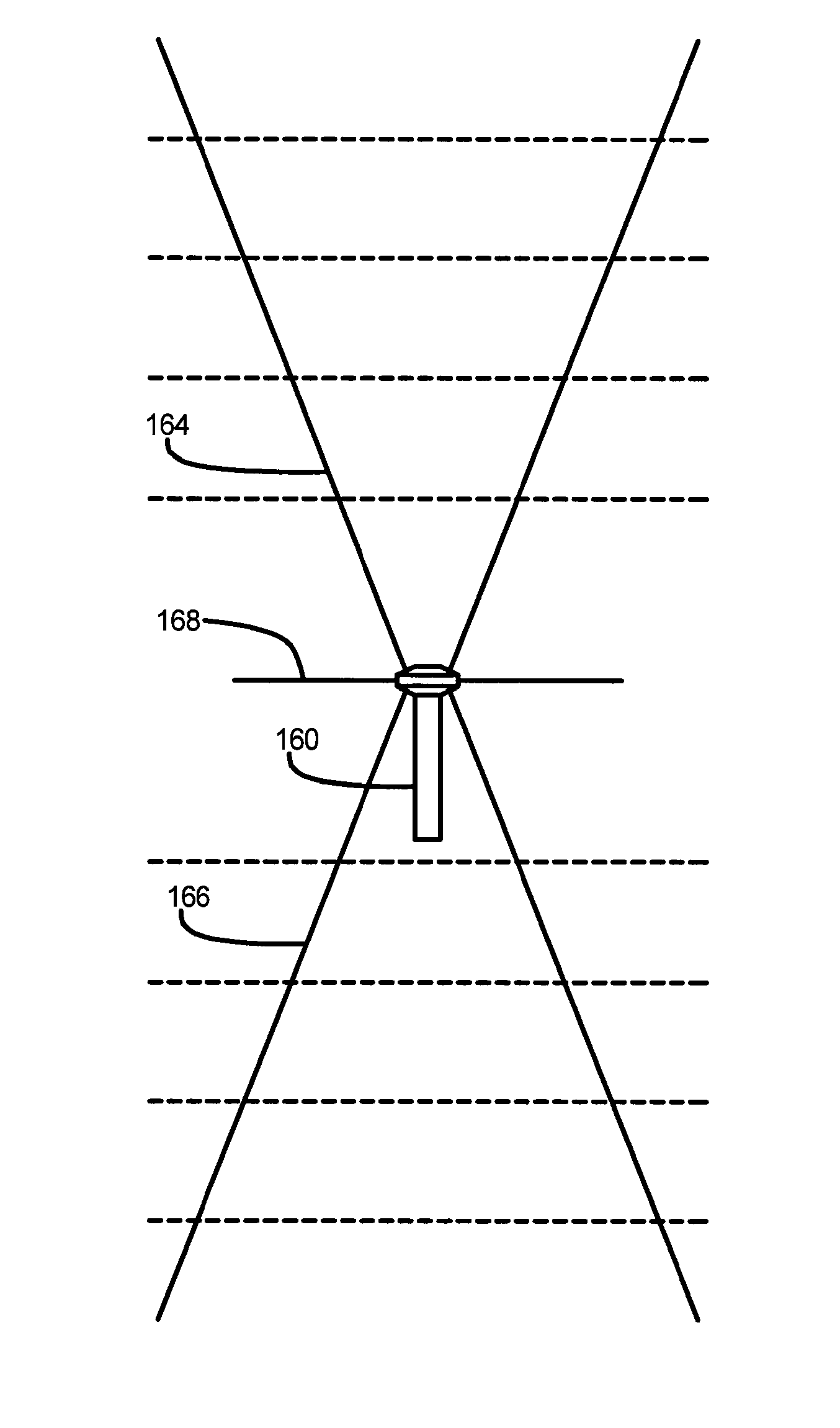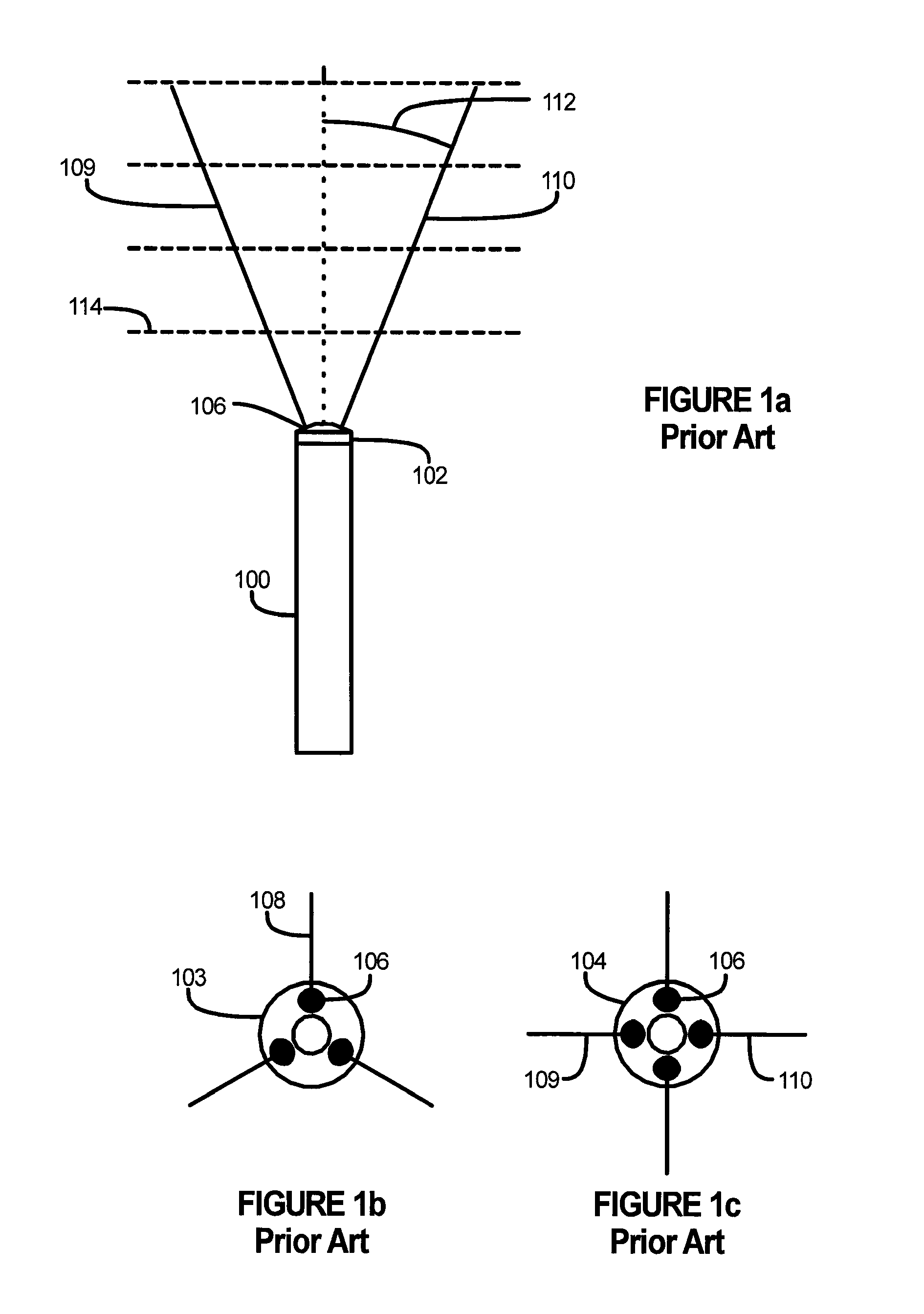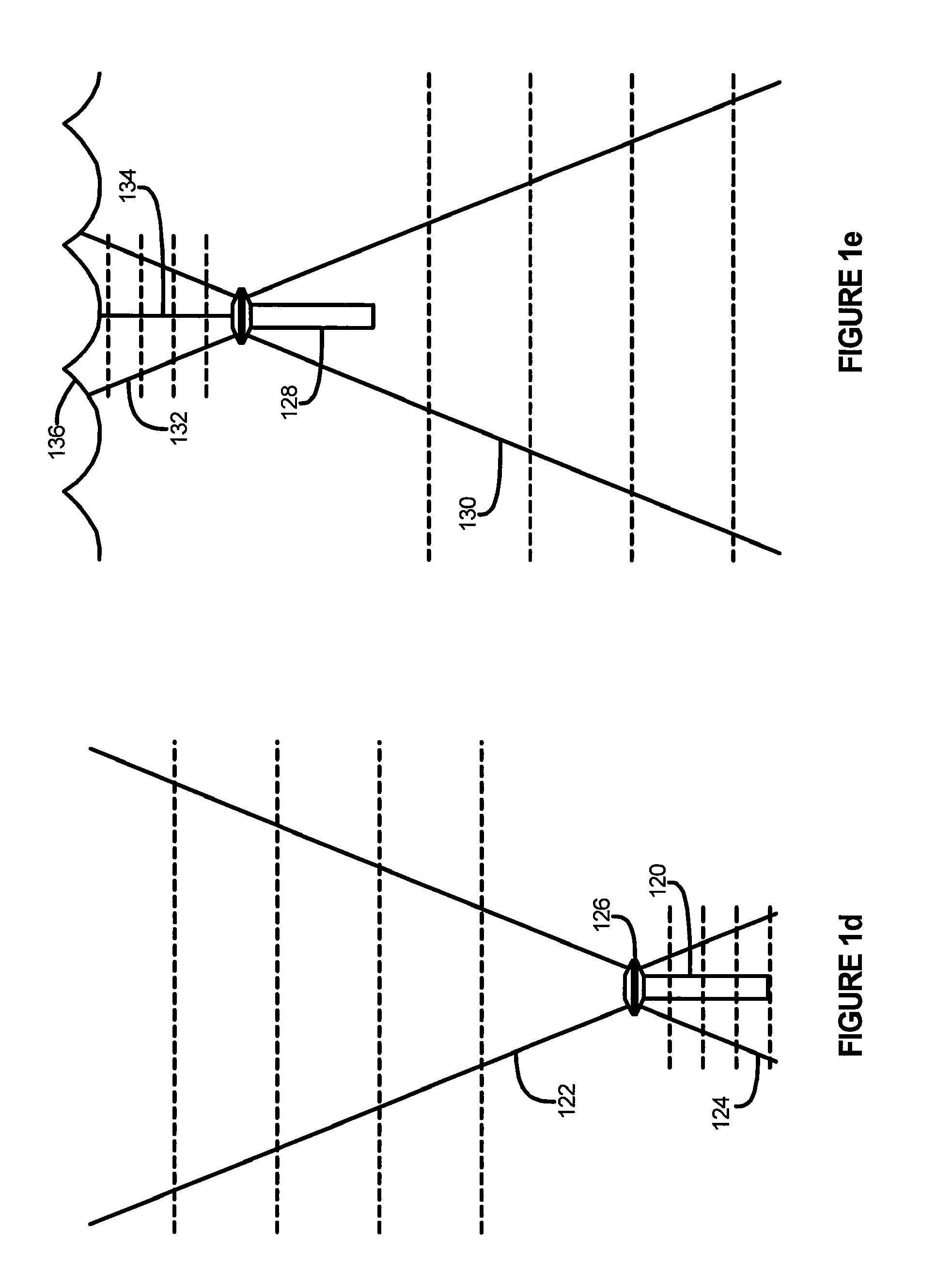Acoustic doppler dual current profiler system and method
a profiler and dual current technology, applied in the direction of volume measurement, liquid/fluent solid measurement, reradiation, etc., can solve the problems of difficult synchronization of data, low accuracy, and low accuracy, and achieve long profiling range, high power, and efficient operation
- Summary
- Abstract
- Description
- Claims
- Application Information
AI Technical Summary
Benefits of technology
Problems solved by technology
Method used
Image
Examples
Embodiment Construction
With reference initially to FIGS. 1a-1c, before describing an Acoustic Doppler Dual Current Profiler (“AD2CP”) in accordance with an embodiment of the present invention, some features of ADCPs of the prior art will first be described to assist the reader in understanding the invention.
With reference to FIG. 1a, an ADCP 100, shown in side view, has, at its top, a transducer assembly 102. This example illustrates an ADCP with its transducer assembly 102 facing upward, but the ADCP 100 could as easily be turned around to face downward. FIG. 1b shows the face of a transducer assembly 103 with three transducers 106, and FIG. 1c shows a transducer assembly 104 with four transducers 106. Each transducer 106 produces a corresponding beam 108, 109, and 110 of sound. The beam angle 112 (FIG. 1a) is the angle between the beam and vertical. This angle 112 is not the only angle required to define the direction of the beam, but it is the angle most commonly specified for an ADCP. Usually, though ...
PUM
 Login to View More
Login to View More Abstract
Description
Claims
Application Information
 Login to View More
Login to View More - R&D
- Intellectual Property
- Life Sciences
- Materials
- Tech Scout
- Unparalleled Data Quality
- Higher Quality Content
- 60% Fewer Hallucinations
Browse by: Latest US Patents, China's latest patents, Technical Efficacy Thesaurus, Application Domain, Technology Topic, Popular Technical Reports.
© 2025 PatSnap. All rights reserved.Legal|Privacy policy|Modern Slavery Act Transparency Statement|Sitemap|About US| Contact US: help@patsnap.com



